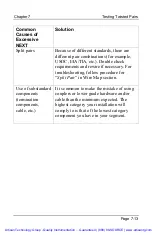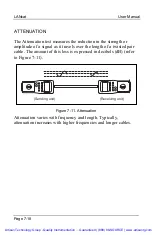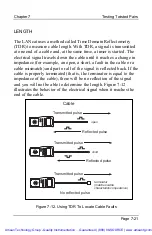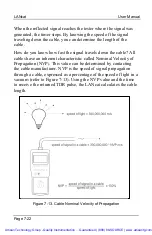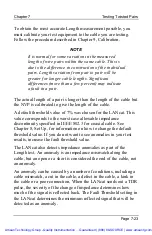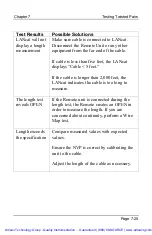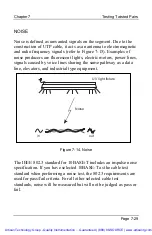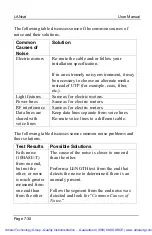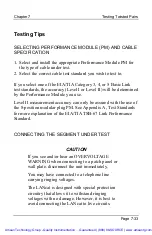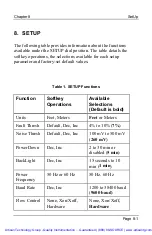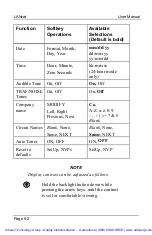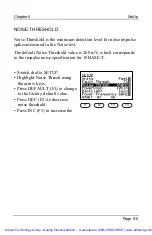
Chapter 7
Testing Twisted Pairs
Page 7-27
DELAY/DELAY SKEW
Figure 7-14. Delay/Delay Skew
Delay is a measure of the time electrical signals take to propagate
from one end of the cable to the other end. The difference in
propagation delays from one cable pair to another is called Delay
Skew.
Delay is important for the proper operation of many Local Area
Networks, particularly Ethernet. Due to the design of these
networks, too much delay can result in data re-transmissions,
ultimately slowing down the network.
Delay Skew is becoming increasingly important in emerging high
speed Networks such as 100BaseT4, 622 Mbps ATM and Gigabit
Ethernet. To transmit data at these rates, these emerging standards
utilize all four cable pairs while transmitting data. In order to
recombine the data at the other end of the cable, these standards
require that the propagation delay of all pairs be roughly equal. If
there is too much difference in delay, or Delay Skew, these LANs
are unable to reconstruct the data.
Artisan Technology Group - Quality Instrumentation ... Guaranteed | (888) 88-SOURCE | www.artisantg.com

